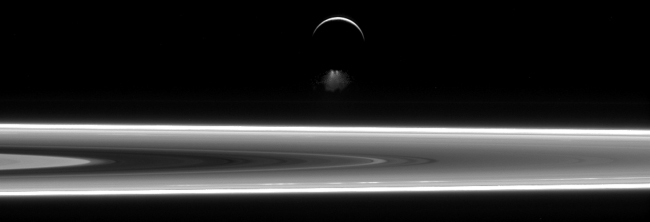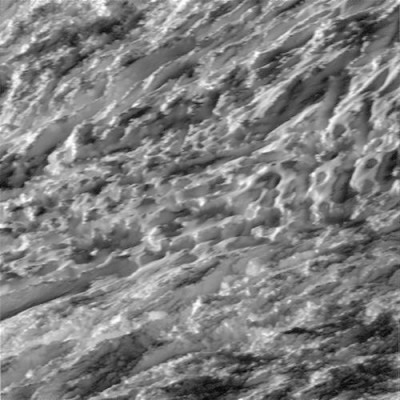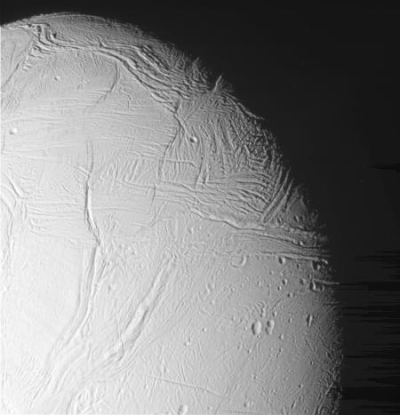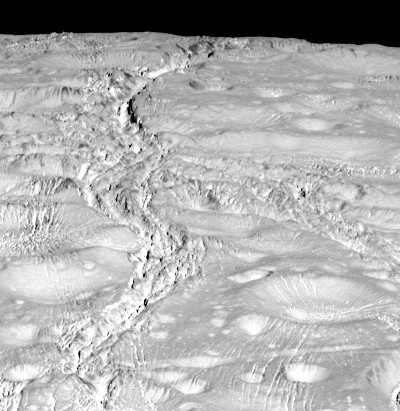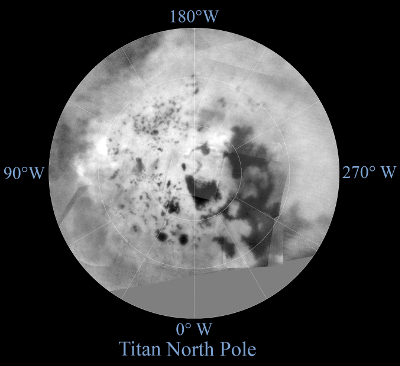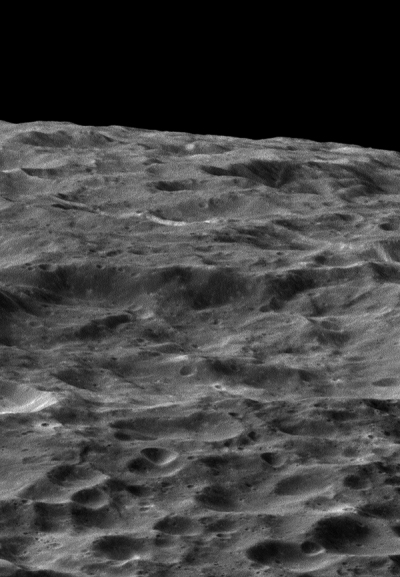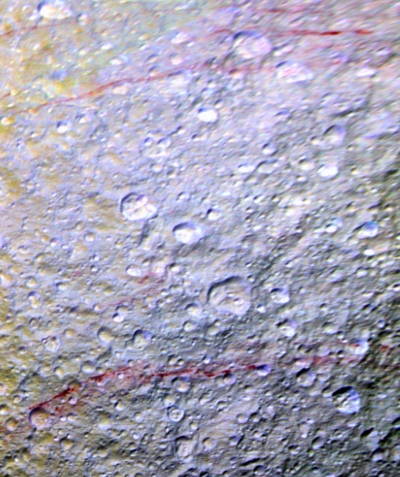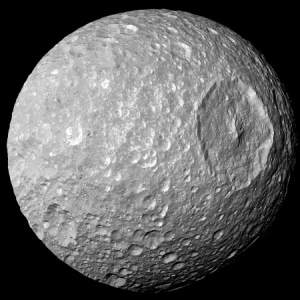The mysteries of science: Radar images of Titan taken in 2013 by Cassini show a twelve-mile patch appear in one of the moon’s methane lakes, then disappear.
They really don’t know what this patch is.
Prior to the July 2013 observation, that region of Ligeia Mare had been completely devoid of features, including waves. Titan’s seasons change on a longer time scale than Earth’s. The moon’s northern hemisphere is transitioning from spring to summer. The astronomers think the strange feature may result from changing seasons.
In light of the changes, Hofgartner and the other authors speculate on four reasons for this phenomenon:
- Northern hemisphere winds may be kicking up and forming waves on Ligeia Mare. The radar imaging system might see the waves as a kind of “ghost” island.
- Gases may push out from the sea floor of Ligeia Mare, rising to the surface as bubbles.
- Sunken solids formed by a wintry freeze could become buoyant with the onset of warmer temperatures during the late Titan spring.
- Ligeia Mare has suspended solids, which are neither sunken nor floating, but act like silt in a terrestrial delta.
“Likely, several different processes – such as wind, rain and tides – might affect the methane and ethane lakes on Titan,” [says Hofgarnter]
It is very important to remember that Titan is a very alien planet to the Earth. While some features, its methane lakes, have a superficial resemblance to lakes on Earth, the materials and environment are completely different. For example, on Earth the only thing that generally floats on water is ice, so that when winter arrives the surface freezes while the water below remains liquid. On Titan, if the methane freezes the ice will sink.

